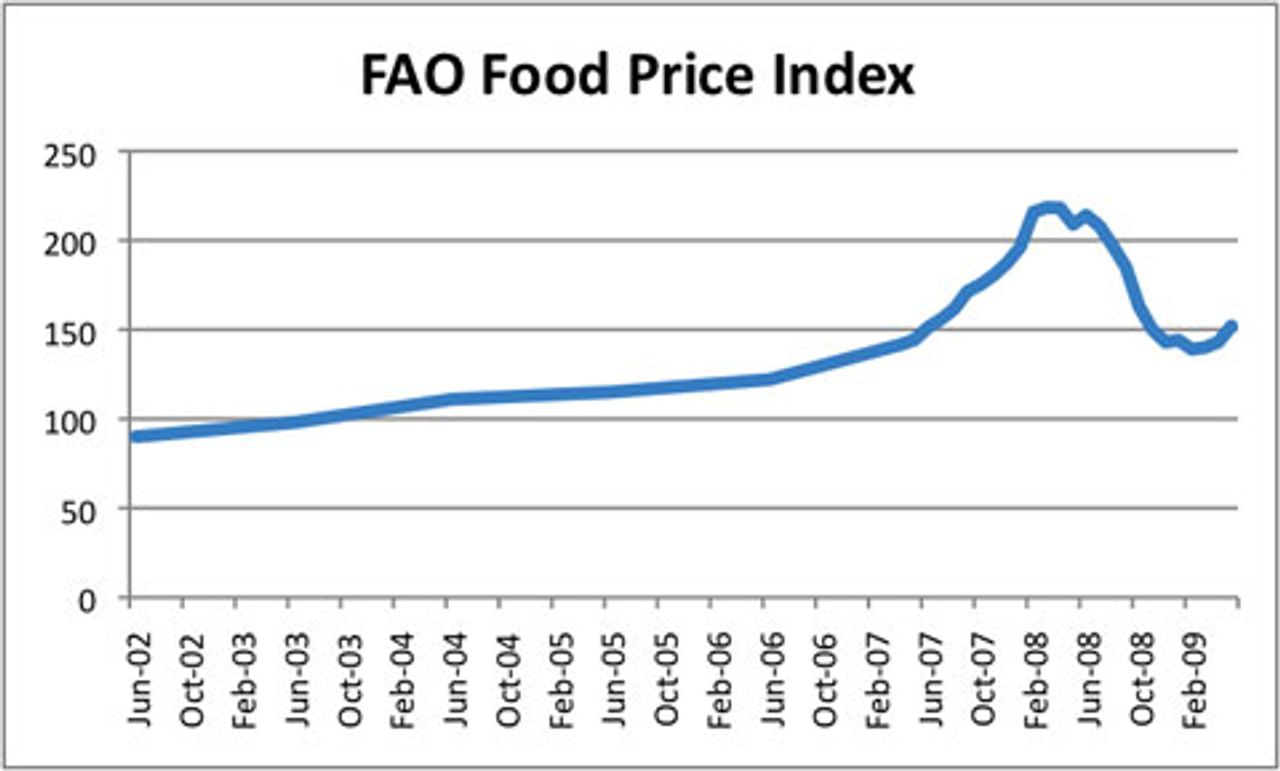Humanity will achieve the dubious distinction this year of having more than 1 billion members of its species living in hunger for the first time in history.
The number of undernourished is estimated to soar by about 100 million over last year, to 1.02 billion, according to the Food and Agriculture Organization of the United Nations (FAO).
The 11 percent surge in the world’s hungry is primarily a product of the global economic crisis, combined with persistently high food prices. World economic output is expected to decline by more than 3 percent this year—the first global contraction since the Second World War. The economic crisis, the FAO notes, “has reduced incomes and employment opportunities of the poor and significantly lowered their access to food.”
The world’s hungry are concentrated in Asia and the Pacific (642 million), Sub-Saharan Africa (265 million), Latin America and the Caribbean (53 million), and the Near East and North Africa (42 million). Sub-Saharan Africa has the highest concentration of hungry, while the Middle East and North Africa saw the most rapid growth in the number of hungry people (13.5 percent).
The agency’s definition of hunger is based on the number of calories consumed. Depending on the relative age and gender ratios of a given country, the cutoff varies between 1,600 and 2,000 calories a day.
It is likely the FAO figures significantly underestimate the number of people suffering from hunger. A study published earlier this year found that 12 million children are at risk of inadequate food in the United States (see, “US: 12 million children face hunger and food insecurity”). FAO figures estimate the total number of hungry people in the entire “developed world” (including the US and Europe) at 15 million.
According to the FAO, the growth of hunger is not the result of a decline in food production. Cereal production, for example, will only slightly decrease this year from 2008. Instead, “the poor are less able to purchase food, especially where prices on domestic markets are still stubbornly high.... At the end of 2008, domestic staple foods still cost on average 24 percent more in real terms than two years earlier; a finding that was true across a range of important foodstuffs.”
In other words, the sharp growth in hunger is due not to a lack of capacity, although global food production could be significantly increased given a rational and scientific allocation of agricultural resources. Instead, the rise in social misery results from the fact that millions more people are now unable to afford the most basic necessities.
The FAO highlights three aspects of the present crisis that make it particularly severe. First, it follows the rapid growth in food prices in the years 2006-2008. This bubble was driven in part by speculative activities of investors pouring money into commodities as the financial crisis developed. This preceding surge in prices eroded any buffer created by households to cope with economic shocks (see figure).

Second, the crisis is global. The FAO notes, “When economic crises are confined to individual countries, or several countries in a particular region, governments can make recourse to instruments such as currency devaluation, borrowing or increased use of official assistance to face the effects of the crisis.”
Third, poorer countries are “more financially and commercially integrated into the world economy” and are therefore “far more exposed to changes in international markets.” They are highly susceptible to rapid changes in global demand or supply and credit restrictions.
Another related factor not mentioned by the FAO has been the way in which the US government has monopolized credit markets to fund its multi-trillion-dollar bank bailouts, exploiting the privileged position of the American dollar to do so. Poorer countries do not have this privilege and are facing higher borrowing costs as a consequence.
The FAO takes note of the growth in interest rates for debt to “developing countries” along with the complete absence of available credit for some nations. The economic crisis has led to other rapid shifts in capital markets, including the drying up of foreign direct investment.
Many poorer countries are seeing a sharp decline in remittances from migrants, by 5 to 8 percent. The FAO notes: “What is more, remittances have usually been resistant to shocks and often even increased during economic crises in recipient countries. The countercyclical effect of these transfers is unlikely to happen this time due to the global dimension of the current recession.”
The FAO also expects foreign aid to drop by 25 percent to the poorest 71 countries. Total official development assistance (ODA) aid from all countries has been about $100 billion a year—as compared to bank bailouts running in the trillions and a US military budget of more than $500 billion.
Countries that rely on exports have been particularly hard hit by the economic crisis, and world trade is anticipated to fall between 5 and 9 percent this year.
The implications of the rapid deterioration of the global economy and the consequent decline in living standards for millions of people were not lost on UN officials. Dr. Jacques Diouf, director-general of the FAO, commented: “The silent hunger crisis...poses a serious risk for world peace and security.” Josette Sheeran of the World Food Program noted, “A hungry world is a dangerous world.”
Many commentators pointed to the possibility of a repeat of the food riots that broke out in 2008. Earlier this year, the G8 countries met to discuss the global “food emergency.” Little emerged from the conference save a mutually expressed concern about the danger of social upheaval and revolution.
